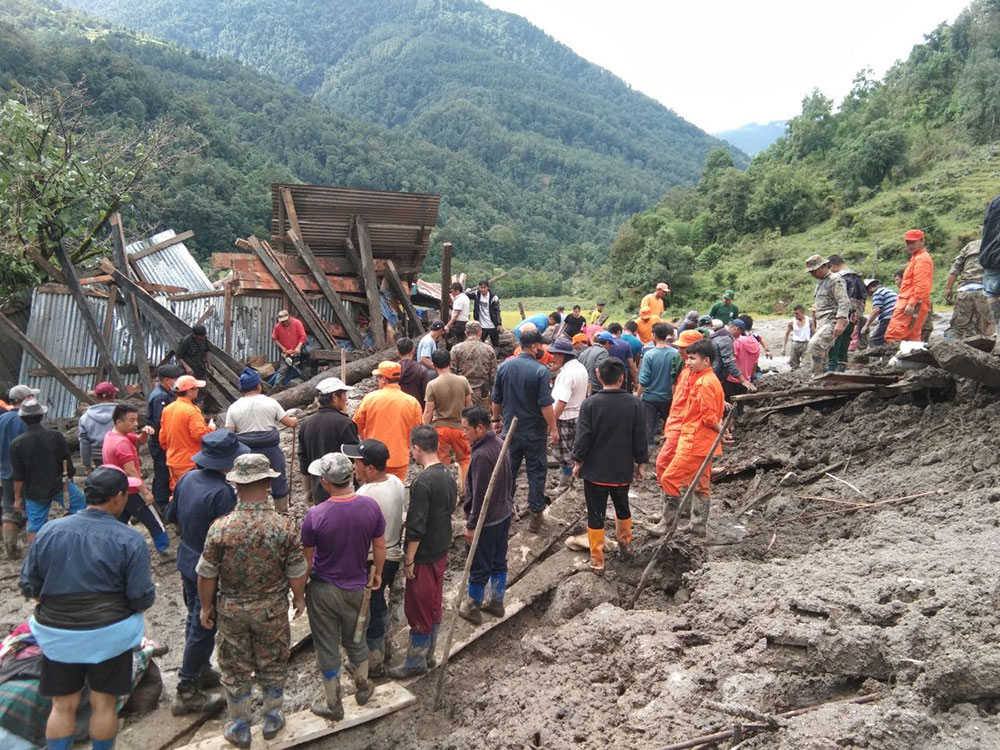YK Poudel
Bhutan is vulnerable to natural disasters and the impact of climate change, investment in climate adaptation and mitigation can reduce risks and improve the resilience of people and the natural environment, according to a recent report from the UNDP.
The nation as per Nationally Determined Contributions (NCDs) report requires USD 0.385 billion for adaptation and USD 0.6 billion for mitigation initiatives in the short-term and an additional USD 6,484.8 million for long-term strategy.
According to the UNDP 2024 Asia-Pacific Human Development Report titled “Making our future: New directions for human development in Asia and the Pacific,” progress in Asia and the Pacific region will rely on a firm commitment to human development and revitalising the region’s tried and tested model of export-led growth.
“By modernising and mainstreaming strategies with improved governance and stronger political determination, the region can accelerate progress, diminish disparities, and prepare for a potentially more turbulent future,” the report states.
The region grapples with an unprecedented confluence of interconnected risks. These risks render the path forward for human development far more challenging to navigate and sustain. The existential threats such as climate change and a changing technological and trade environment are listed among others.
The report examines how the region can renew, and redefine, human development momentum while steering through the turbulence ahead.
Administrator of the UNDP, Achim Steiner, mentions that the report focuses on three strategies namely human development and growth strategies, diversification of strategies and preparation for multiple potential futures, and enhancing governance with foresight, adaptability, and agility to facilitate better implementation turning new ideas into action.
Human development and growth strategies, as per the report, need to be integrated—the human development approach needs to be mainstreamed into countries’ decision-making.
In Asia and the Pacific, the human development journey has been a story of progress, disparity, and disruption. Alarmingly, the region is not on track to achieve any of the Sustainable Development Goals, and millions of people live precarious lives with multiple threats to their security.
The report states that the development strategy needs to be recentred so as to fully meet people’s needs and rights while easing pressures on the planet. “This enables countries to enlarge people’s choices, build stronger human security, ensure environmental sustainability, and help meet obligations to future generations.”
The country currently emitting the most greenhouse gases is China, which in 2022 accounted for 32 percent of global carbon dioxide emissions. India, the second largest emitter of the region, is expected to have been recording considerable rises in emissions last year. At the other end of the spectrum are the small Pacific Island States, which contribute only 0.01 percent to global emissions but must grapple with immediate and existential threats such as rising sea levels.
Addressing climate change necessitates a united global effort. The report suggests that the country can take steps for risk management and development strategies—implementing these measures into local and national adaptation initiatives.
Cause of the issues—different countries, different priorities
The extent to which growth is a priority will depend on how much growth the country has already had. For example, debating the significance of economic growth may appear a luxury for countries with per capita income levels approaching those of high-income countries like Japan, Germany, or the United States, as opposed to those at the levels of Afghanistan or developing nations like Indonesia or Sri Lanka where the marginal benefits of growth may be far higher. For lower-income countries, economic growth is essential if it is for enhancing living standards and meeting basic human needs.
Asia-Pacific’s journey in human development has been one of long-term progress, but also stark disparities and disruptions. Alarmingly, the region is not on track for achieving any of the SDGs and human insecurity is high in many countries.
Investing in climate-resilient development is seen as vital due to the region’s vulnerability to climate change impacts. By directing resources towards climate adaptation disaster risk reduction measures, and climate risk projections, countries in Asia and the Pacific can enhance their resilience to a changing climate.
“These investments not only protect millions of people and vital ecosystems but also promote economic growth and regional stability in an era marked by climate uncertainty,” the report states.


